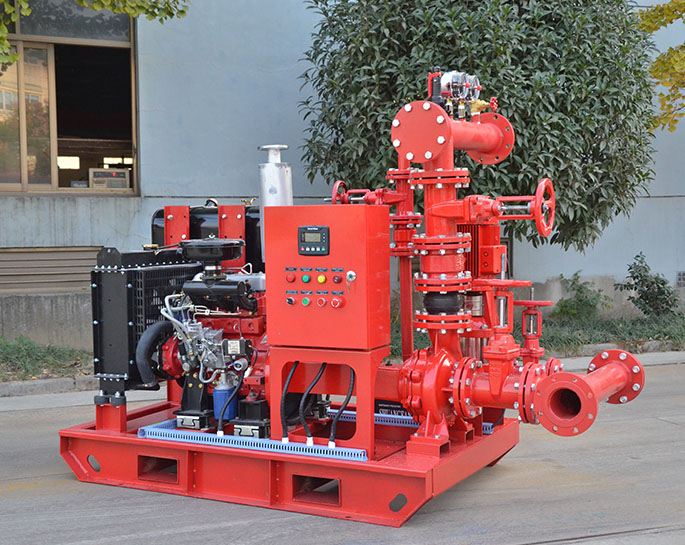Main features of vertical multistage fire pump
Vertical multistage fire pumps are designed specifically for fire protection applications, where reliability, efficiency, and performance are of utmost importance. These pumps are used to deliver pressurized water for fire suppression systems in various settings, including commercial buildings, industrial facilities, and residential complexes. Here are some of the main features and characteristics of vertical multistage fire pumps:
-
Multistage Design: Vertical multistage fire pumps consist of multiple impellers stacked on a common shaft. Each impeller adds pressure to the water as it passes through, allowing the pump to generate higher pressures efficiently. This design enables the pump to deliver the required high pressure needed for effective fire suppression.
-
Vertical Orientation: These pumps are designed to be installed vertically, which helps save space compared to horizontal pumps. Vertical installation is particularly useful in applications where floor space is limited.
-
Efficiency: The multistage design of these pumps contributes to higher efficiency levels. Each impeller stage adds energy to the water, resulting in more effective pressure boosting while maintaining energy efficiency.
-
High Pressure: Vertical multistage fire pumps are capable of delivering high discharge pressures, making them suitable for fire protection systems that require significant pressure to overcome pipe friction and reach elevated locations.
-
Reliability: Fire pumps are critical for life safety, so reliability is paramount. Vertical multistage pumps are known for their dependable performance and durable construction. Their design reduces the risk of cavitation, which can be detrimental to pump efficiency and longevity.
-
Balanced Hydraulic Operation: The design of these pumps often includes hydraulic balancing to minimize axial thrust and vibration. This enhances the stability of the pump during operation, reducing wear on components and ensuring longer service life.
-
Compact Footprint: The vertical design allows for a smaller footprint, which can be advantageous when space is limited, especially in retrofit or space-constrained installations.
-
Easy Maintenance: Many vertical multistage fire pumps are designed for easy maintenance. Access to the pump's internals is facilitated by removable casing covers or split-case designs, making inspection and maintenance more convenient.
-
Materials of Construction: Fire pumps are typically constructed from materials that meet fire protection standards and provide corrosion resistance. Common materials include cast iron, bronze, stainless steel, and other alloys depending on the application and the type of fluids being pumped.
-
Electronic Control Options: Modern vertical multistage fire pumps often come equipped with advanced electronic control panels. These panels can provide real-time monitoring, diagnostics, and remote operation, enhancing system reliability and ease of management.
-
Compliance with Standards: Fire pumps and fire protection systems are subject to various standards and codes, such as NFPA 20 (National Fire Protection Association) and local regulations. Vertical multistage fire pumps are designed to meet or exceed these standards to ensure reliable and compliant operation.
When selecting a vertical multistage fire pump for a specific application, it's essential to consider factors such as required pressure, flow rate, system design, available space, and regulatory requirements. Consulting with experts in fire protection engineering and equipment selection can help ensure that the chosen pump meets the safety and performance needs of the fire protection system.


.png)
.png)

.png)


